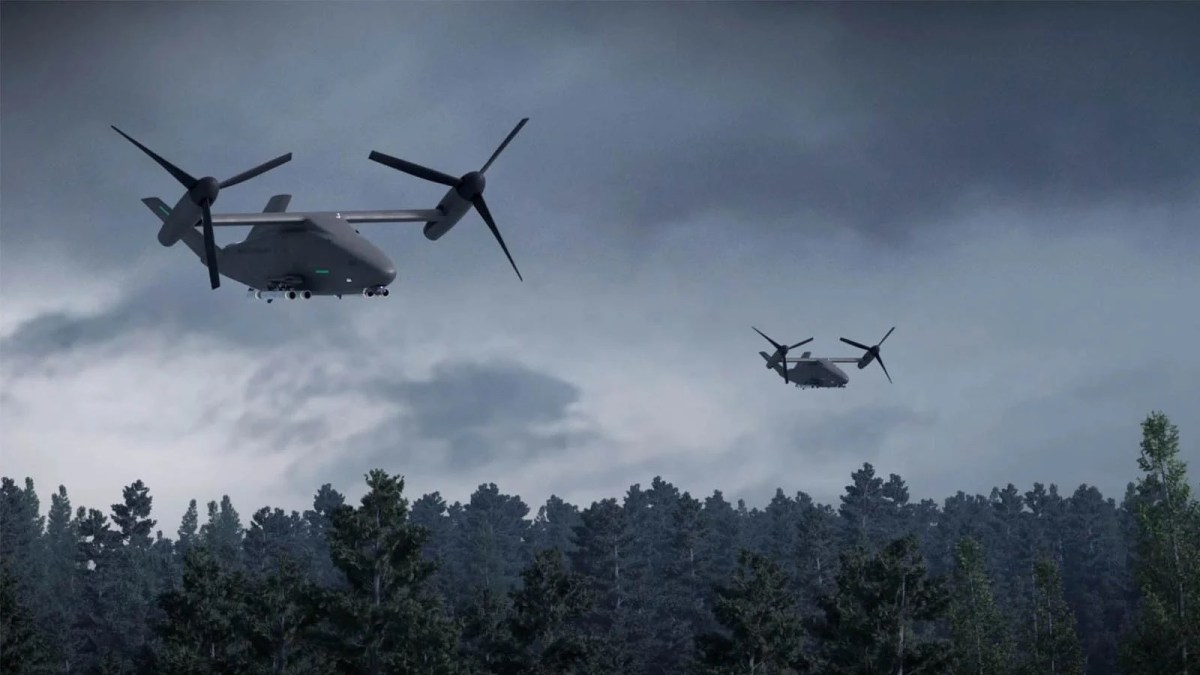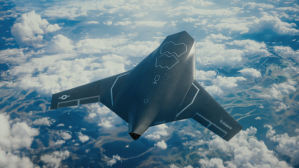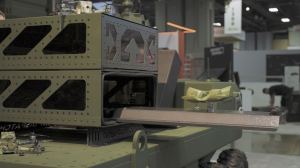The Army wants its own fleet of loyal wingman drones

The Army may soon open competition for its own version of a Collaborative Combat Aircraft (CCA) loyal wingman drone that could be delivered in the next few years, according to officials.
The service’s aviation arm has been working with industry, as well as counterparts from Army component commands in the Indo-Pacific and Europe, to flesh out requirements for a future loyal wingman drone program, Brig. Gen. Cain Baker, director of Army Aviation Future Capabilities Directorate, said during the annual AUSA conference.
While the effort is still in early stages of development, the Army is taking cues from a recent study with industry, upcoming experiments and the other services as it irons out the details.
“That has been a focus for the last year,” Baker told reporters last week. “As we go forward, we’re watching closely in our experimentation to develop a full requirement [and] potentially deliver a capability over the next couple of years.”
The Air Force, Navy and Marine Corps each have respective CCA programs. The Air Force is furthest along in development, with plans to award a final production decision in fiscal 2026. The concept broadly seeks to field large unmanned aerial vehicles that can fly alongside the military’s manned aircraft and conduct a range of missions, including offensive strike and intelligence gathering.
Although the other services have lauded the benefits of fielding CCA drones, the Army has previously shied away from pursuing a version that could fly alongside its fleet of primarily rotary-wing aircraft. But adding loyal wingman drones could augment the Army’s aircraft portfolio of manned systems, while also addressing range requirements needed for future conflicts, Baker said.
“A CCA concept allows you to increase mass while also reducing the amount of aviators you got to have in the air,” Baker said. “We’re working with both [U.S. Indo-Pacific Command] and working with [U.S. European Command] to look at the capabilities that they need in order to deliver that mass and, really, survivability.”
The service’s development of autonomous tech has recently focused on its launched effects program, which deals with smaller drones that could be deployed mid-flight from manned aircraft or from ground launchers.
Like CCA drones, launched effects would be able to perform different functions. The Army plans to field short-, medium- and long-range launched effects, and recently discussed plans to introduce an ultra-long-range iteration.
“Launched effects, if you think about it, is a CCA,” Maj. Gen. Clair Gill, commanding general of the Army Aviation Center of Excellence, told reporters. “These are things that we’re going to launch off an aircraft and they’re going to operate in a collaborative fashion, potentially autonomously. But we’re going to give them instructions, and they’re going to operate based off of guidance — either off of something on the ground or maybe they’re being quarterbacked in the air.”
However, when asked if the Army’s vision for loyal wingman drones would be different from the service’s launched effects, Gill said “it could be.”
The Army has partnered with multiple vendors to experiment with different launched effects variants. For its short-range version, the service tested three tube-launched, fixed-wing UAVs — RTX’s Coyote Block 3, Anduril’s Altius 600 and AEVEX Aerospace’s Atlas — during a demonstration in August at Joint Base Lewis-McChord in Washington. Prototypes for the medium-range launched effect have featured similar airframes and deployment mechanisms.
But in 2024, the service reached out to industry to understand what was available in terms of a Group 4 UAV — the same class as the Army’s MQ-1C Gray Eagle — that was capable of either vertical take-off and landing (VTOL) or short take-off and landing (STOL), said Brig. Gen. David Phillips, program executive officer for aviation.
The study provided “a great set of information on what the state of the art for technology is from a range, speed, payload and effects perspective,” Phillips said during the media roundtable. He added that a future Army CCA could look like a mix of new platforms under development by industry and others.
Baker noted the Army would require a different type of CCA than those of the other services, which are essentially unmanned fighter jets.
“When you look at a CCA role that’s really linked to rotary wing, that is a different dynamic than you have at [20,000] to 30,000 feet. It’s a whole set of different behaviors, a whole set of different capability,” he said. “You need to marry that up with an aircraft that’s flying at 100 feet [at] 150-plus knots at night.”
The service plans to invite industry for an experimentation event sometime in early 2026 that will build off of PEO Aviation’s study, Baker said. While he did not name any specific vendors, a number of companies have recently unveiled new unmanned aircraft projects.
On Oct. 14, Boeing announced it is developing an unmanned tiltrotor concept dubbed the Collaborative Transformational Rotorcraft (CxR). The drone could serve as a loyal wingman to the Army’s AH-64 Apache helicopters for offensive and sensing missions, or even fly alongside the CH-47 Chinook to conduct logistics, according to the company.
At the same time, Sikorsky has unveiled two new systems that could complement the Army’s CCA effort. The Lockheed Martin subsidiary first revealed its NOMAD family of VTOL drones for reconnaissance, light attack and other missions on Oct. 6, and later announced Oct. 13 it would be offering a fully autonomous version of the UH-60L Black Hawk — the U-Hawk — for logistics operations.






